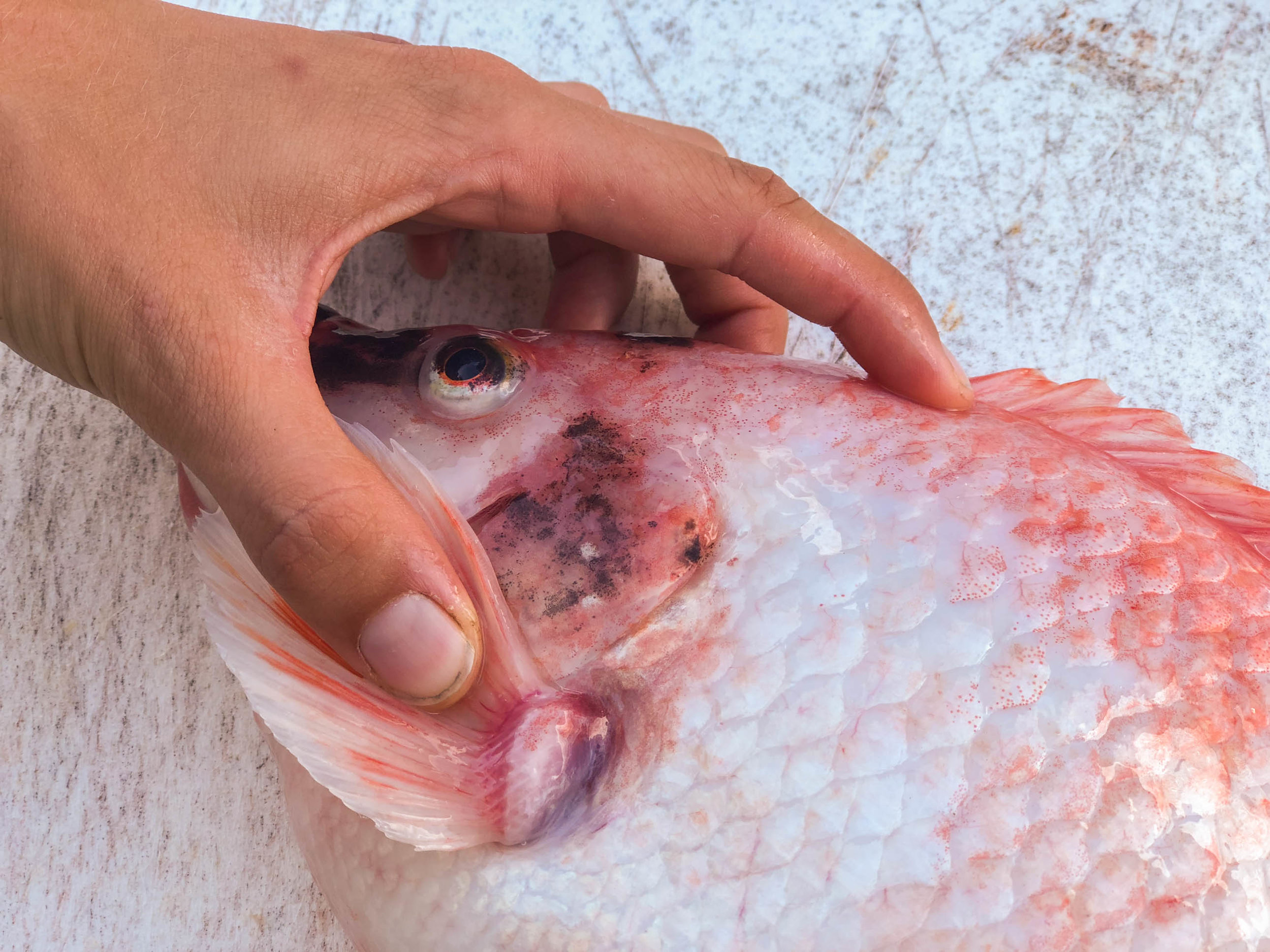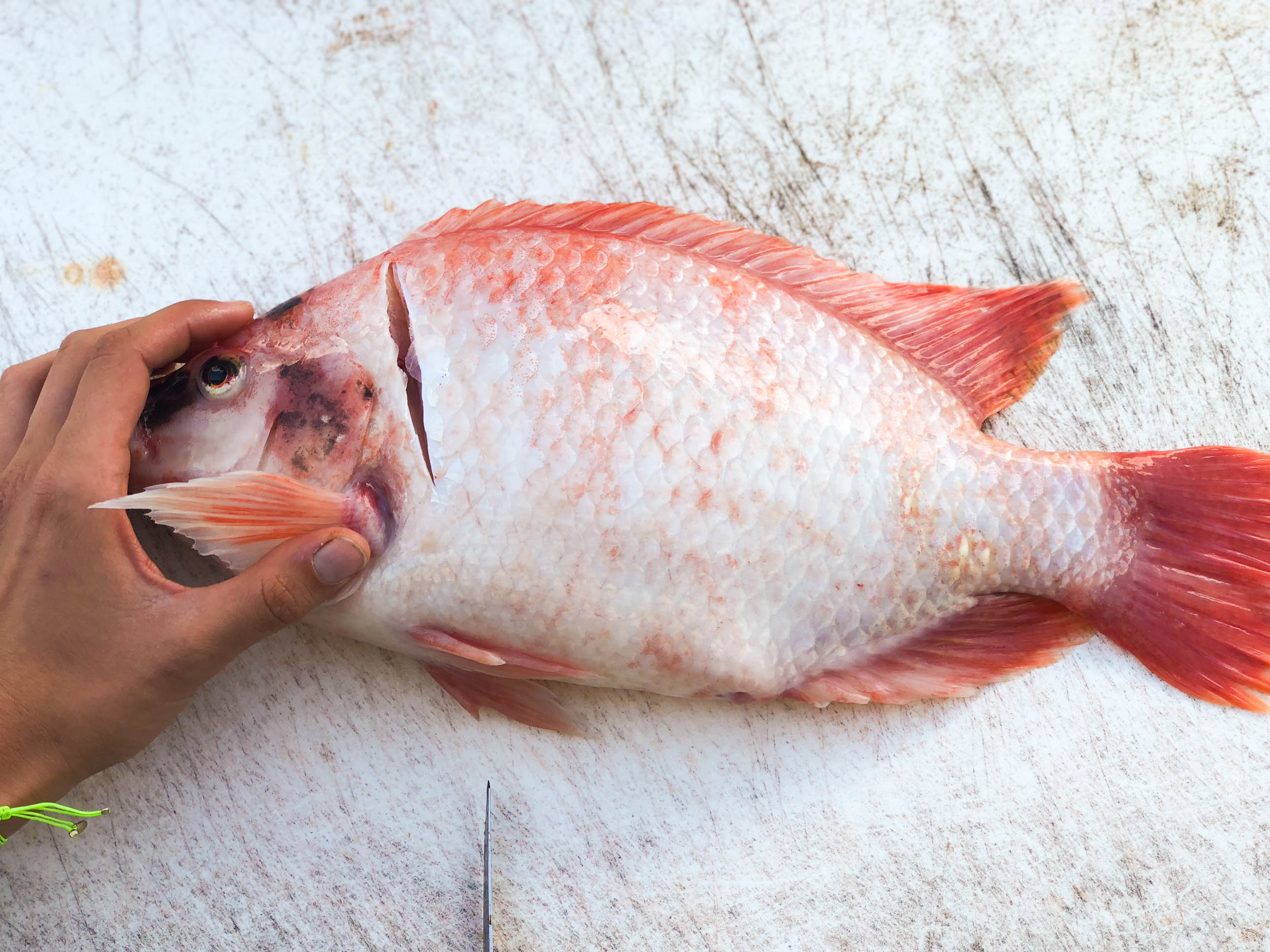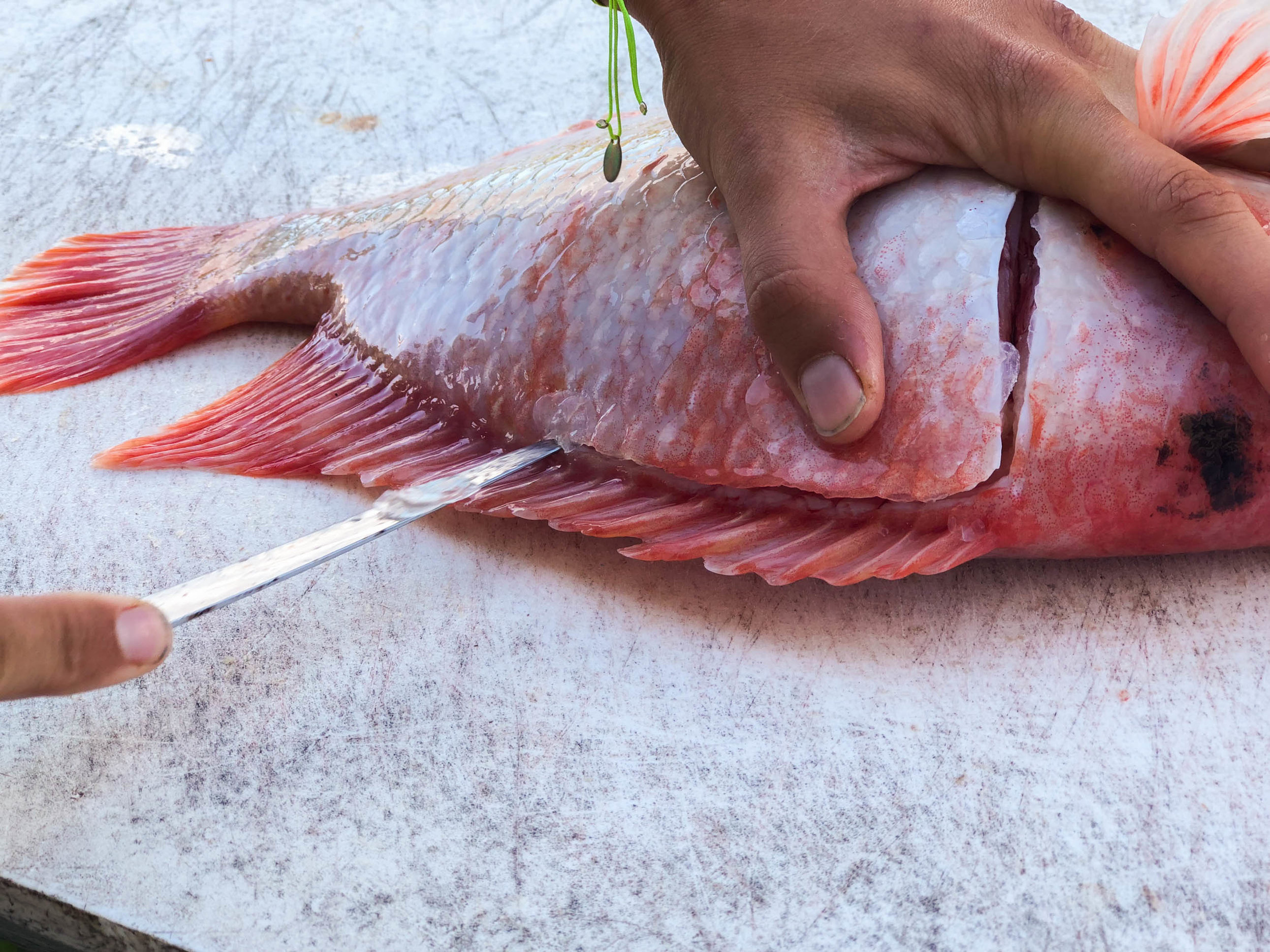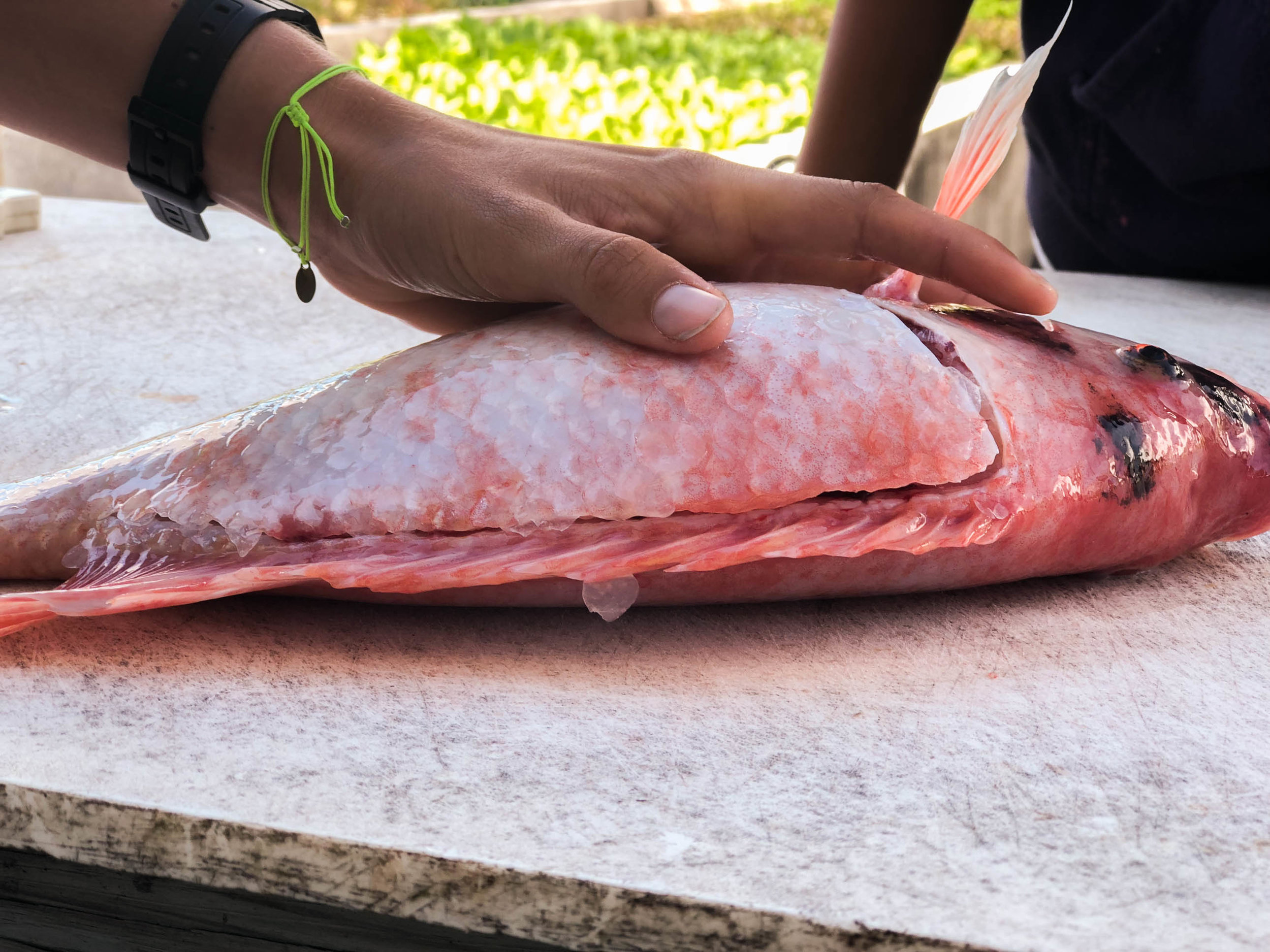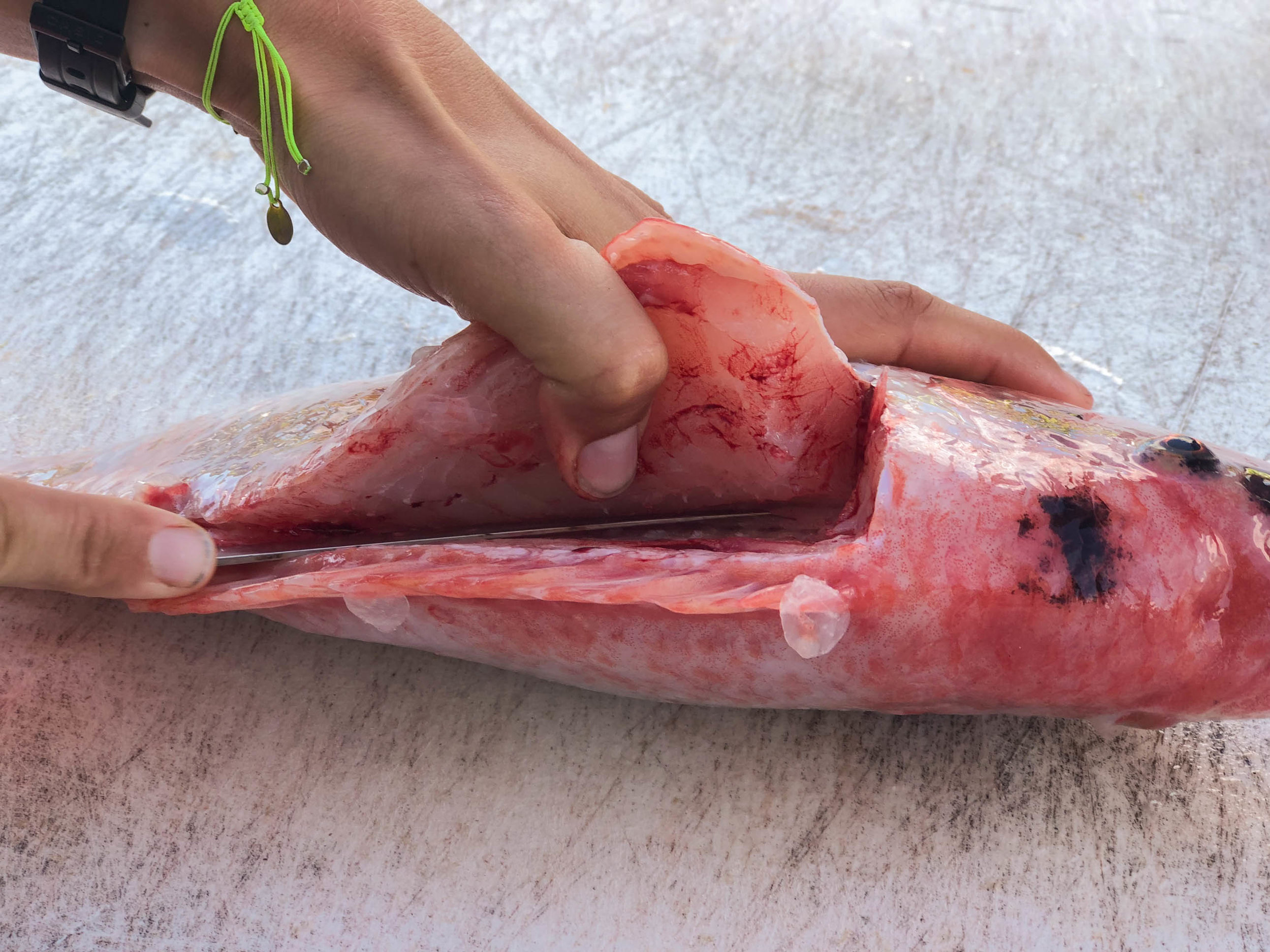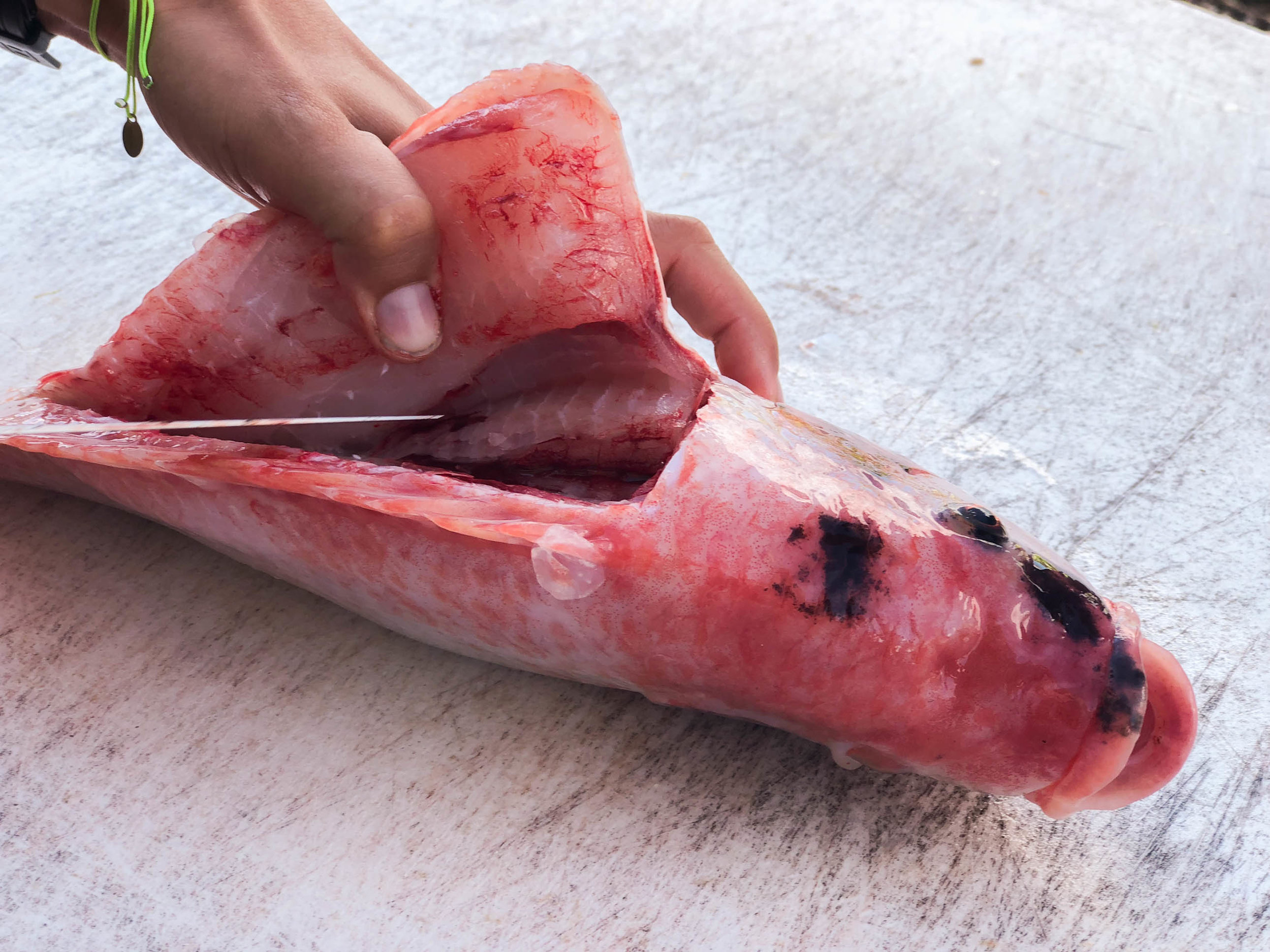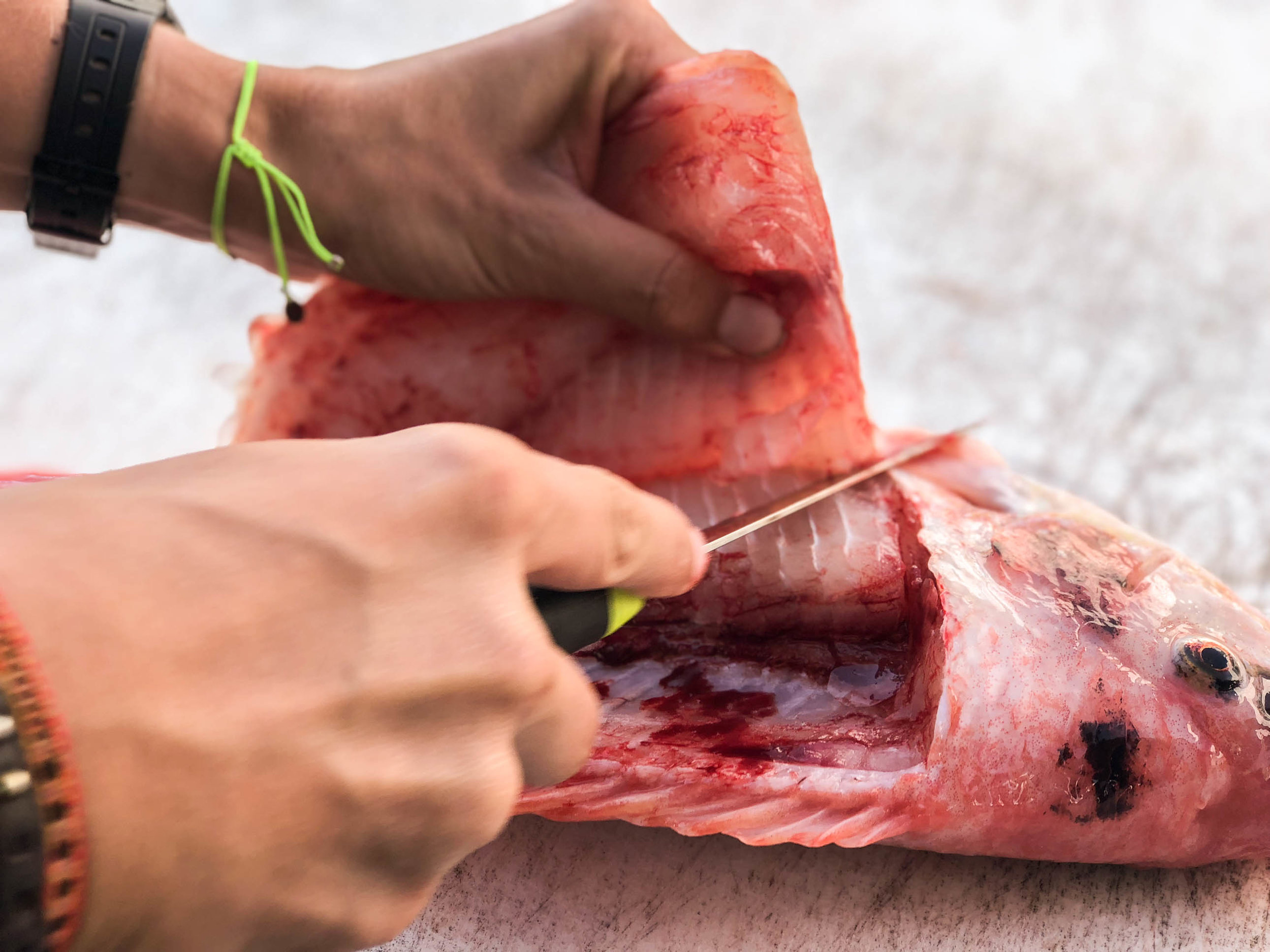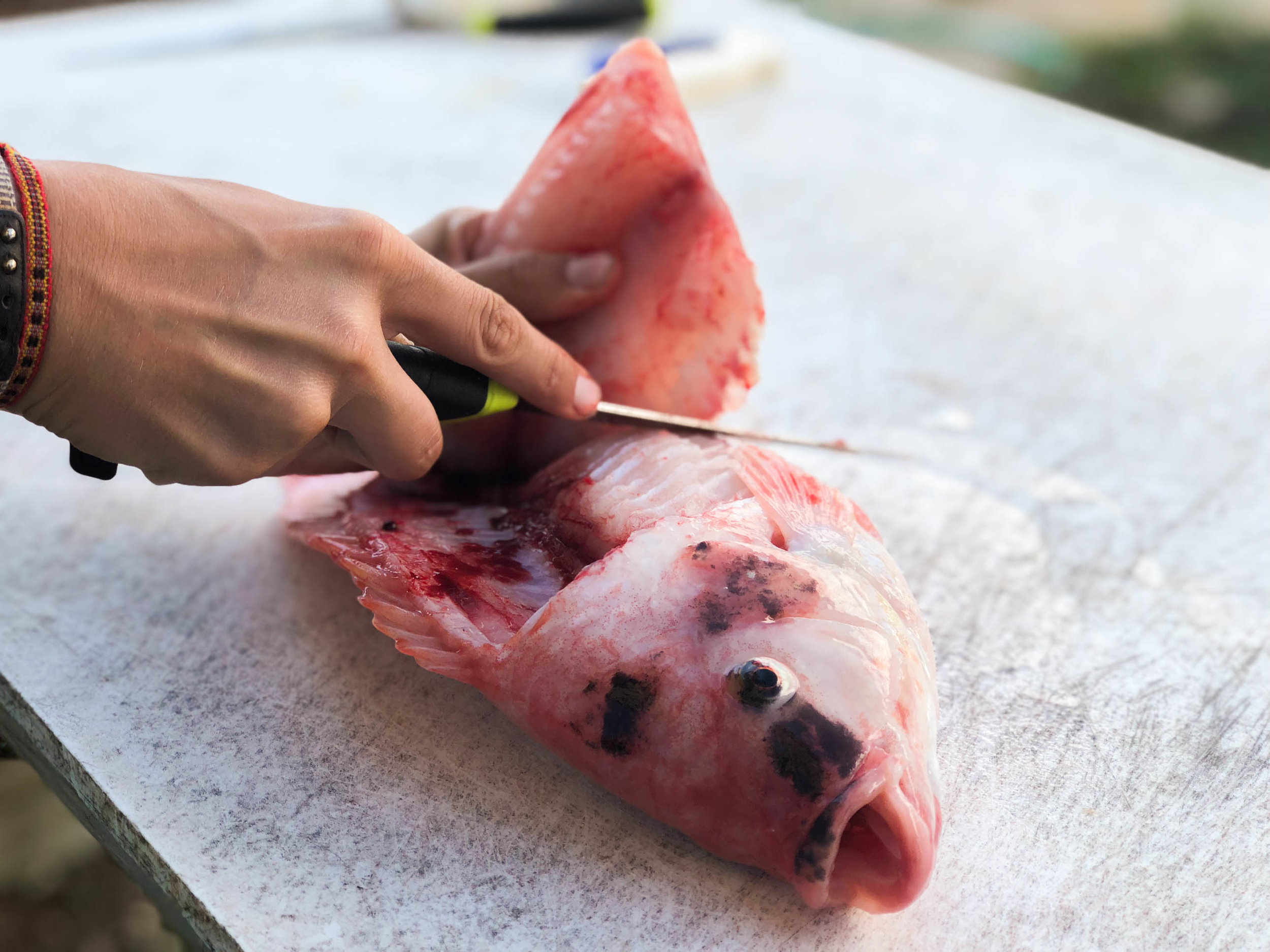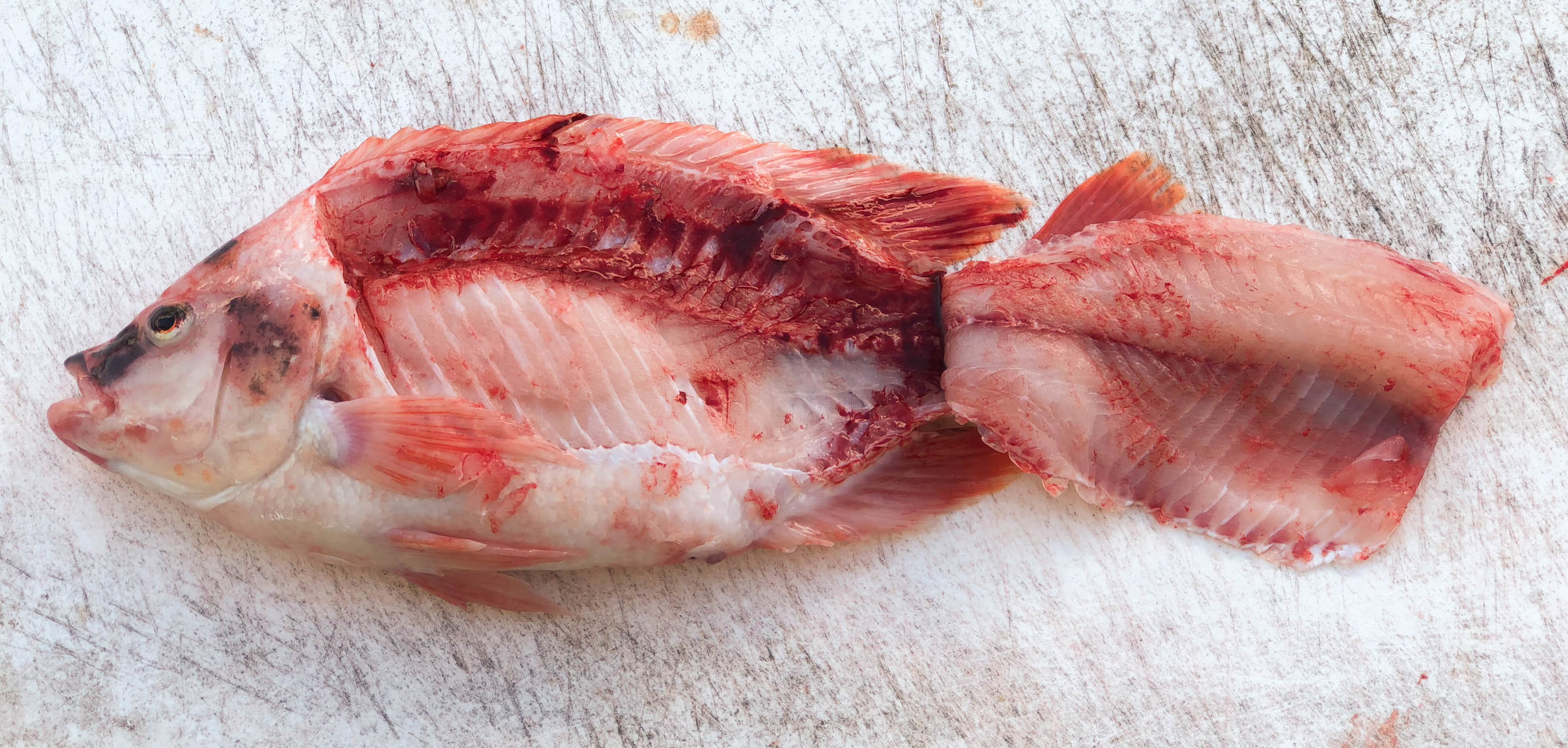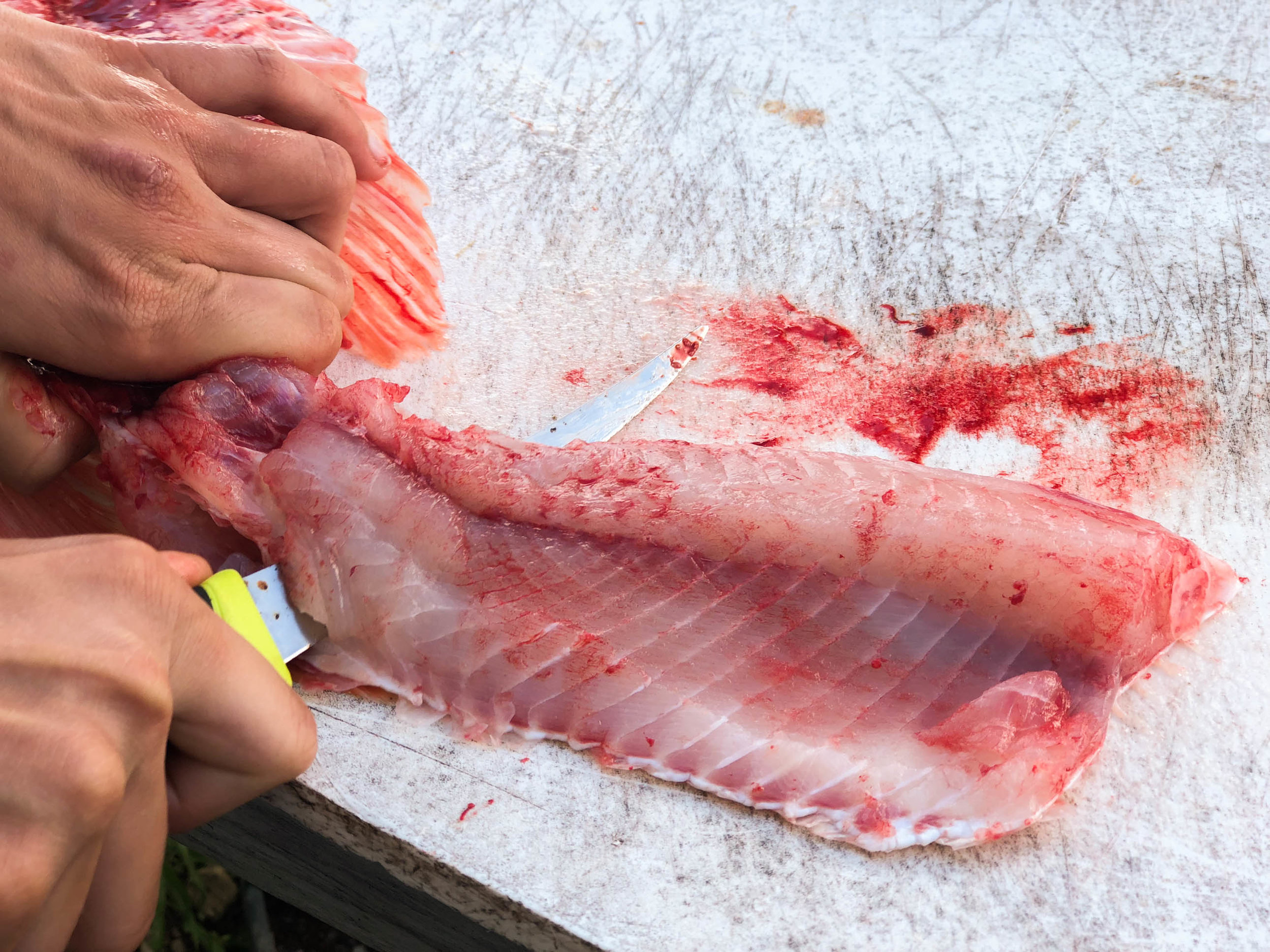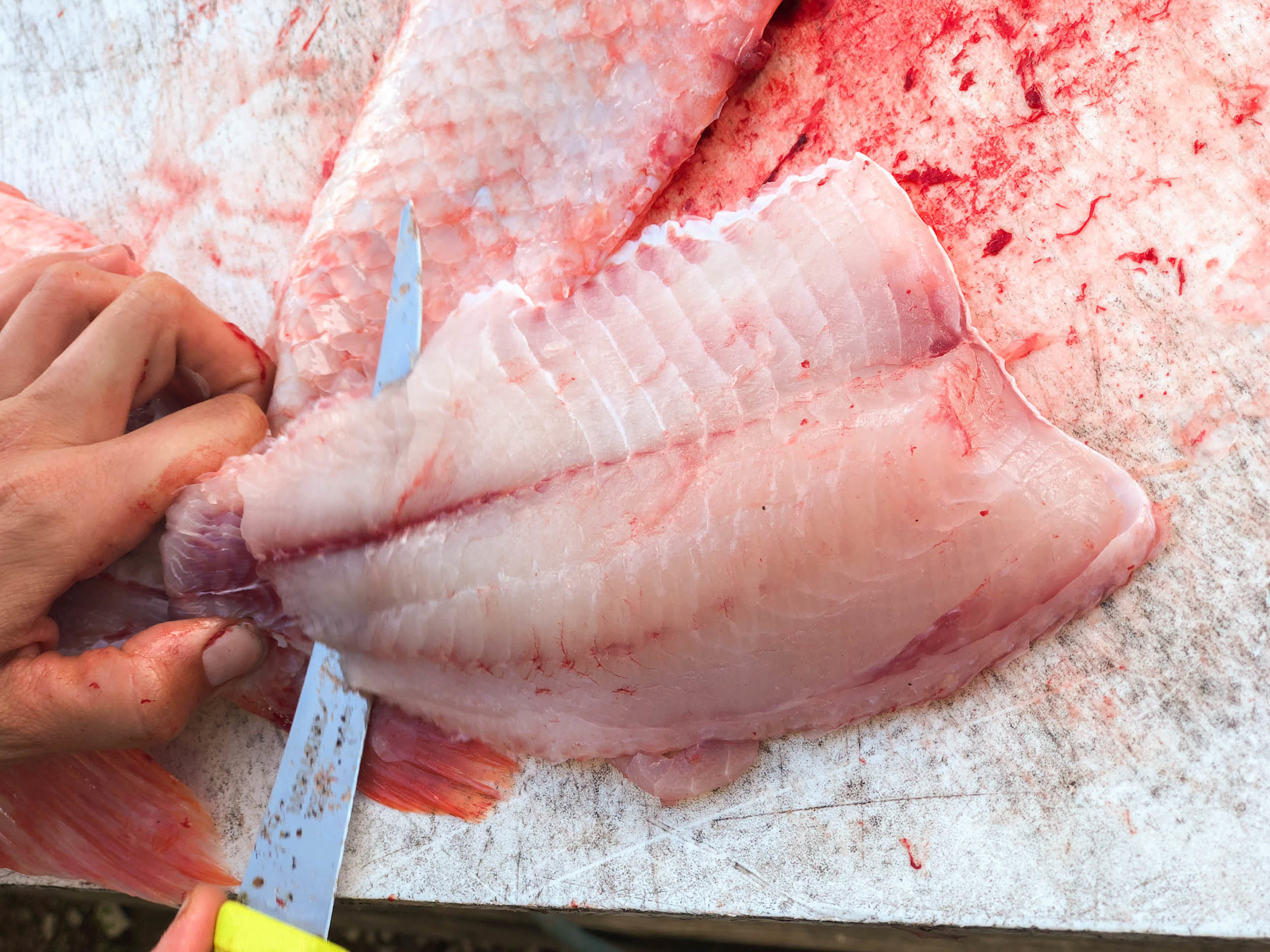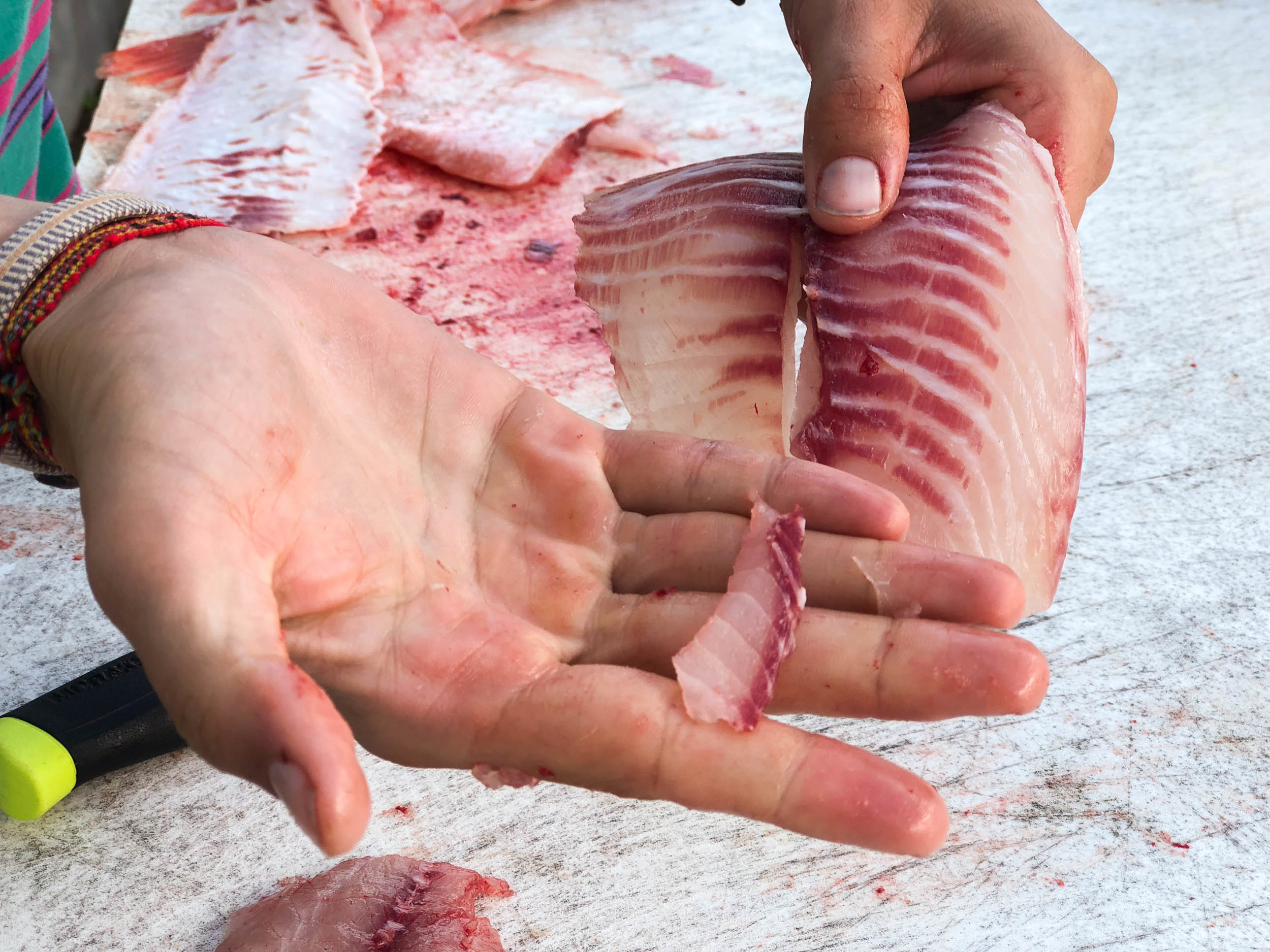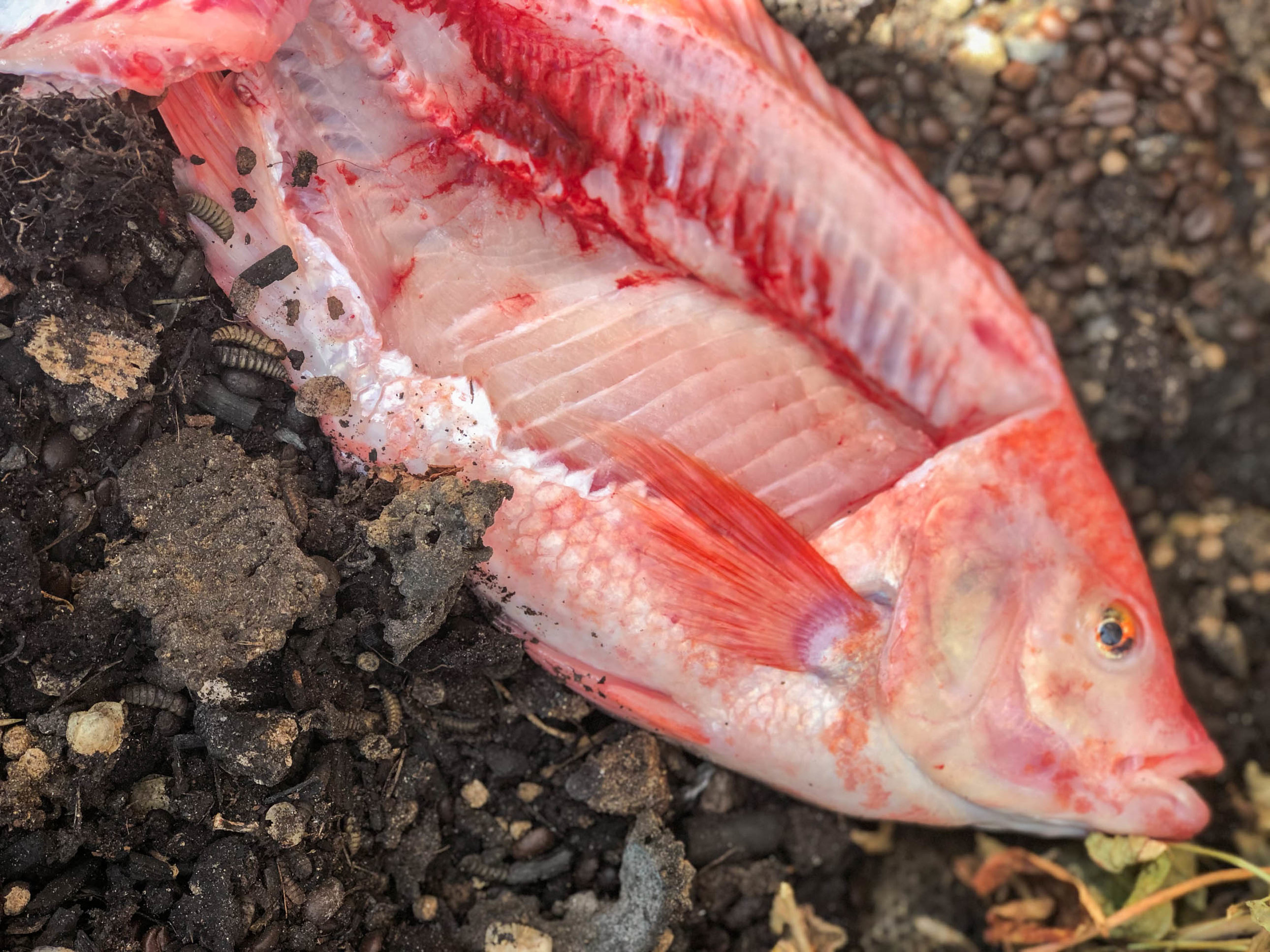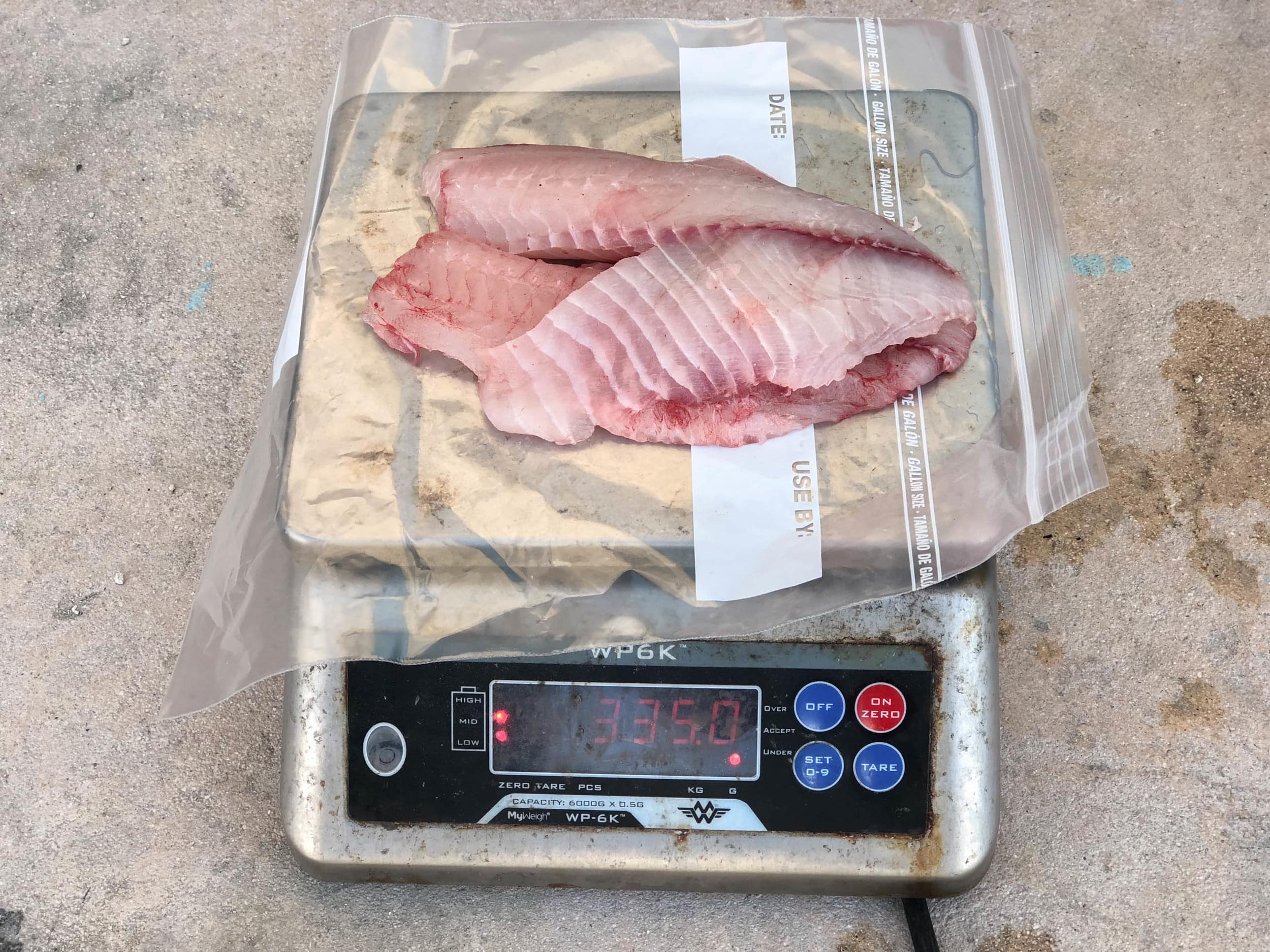In our last blog we talked all about why we raise and harvest tilapia here at the Center for Sustainable Development. This week we are giving you the steps on how to fillet your own tilapia. You can use this filleting method for other fish as well including groupers and snappers.
Required Materials:
-
Cutting board
-
Sharp knife
-
Plastic bag for fillets
-
Bucket for carcasses
Step #1: Clean whole fish with water and place the whole fish flat on a cutting board or table (for freshwater fish clean with freshwater and for saltwater fish clean with saltwater because otherwise it will ruin the flesh).
*Note: You can cut the head off either before or after fillet process since the head is great for making delicious broth.
Step #2: Use your fingers to find the soft spot between the fish’s skull and where the dorsal spines starts.
Step #3: Using the blade of the knife, make a slightly diagonal cut from the soft spot to about an inch behind the pectoral fin .
Step #4: Turn fish 180 degrees for a better grip. Then, using just the tip of the knife, make a cut about half an inch deep from the soft spot between the spines and skull towards where the dorsal spines end (cutting as close to the dorsal spines as possible).
Step #5: From where the first two cuts intersect lift up the corner of the fillet and begin separating the flesh from the bones, leaving minimal flesh on the bone. Make sure blade is right up against the ribs to cut off as much as the fillet as possible.
Step #6: Once you reach the posterior end of the pectoral fin, begin making a cut towards the caudal fin. The ribs on the fish should be visible. DO NOT cut off as it will make separating the fillet from the skin very difficult.
Step #7: The fillet is now separated from the bones. Flip the fillet out and begin cutting where the skin meets the flesh.
Step #8: Trim the pin bones from the fillet. There are usually a few in the middle. (The amount and location of pin bones may vary on fish species)
Step #9: Repeat on the other side of the tilapia.
Step #10: Recycle the tilapia carcass and compost! (The circle of life)
The tilapia fillet should be about 20-30% of the entire fish.
Now you can enjoy a delicious fish dinner. Happy filleting!

